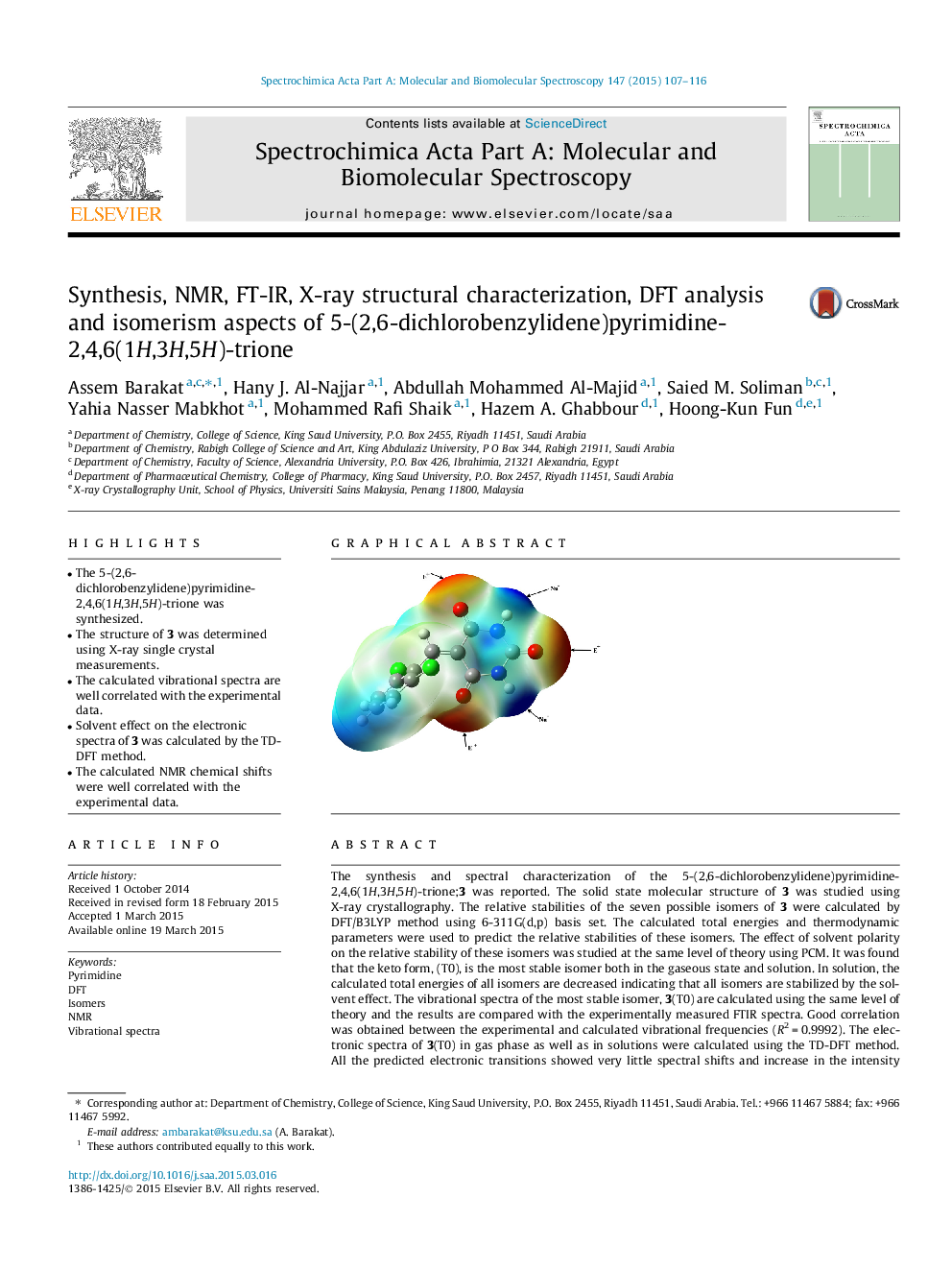| Article ID | Journal | Published Year | Pages | File Type |
|---|---|---|---|---|
| 1228806 | Spectrochimica Acta Part A: Molecular and Biomolecular Spectroscopy | 2015 | 10 Pages |
•The 5-(2,6-dichlorobenzylidene)pyrimidine-2,4,6(1H,3H,5H)-trione was synthesized.•The structure of 3 was determined using X-ray single crystal measurements.•The calculated vibrational spectra are well correlated with the experimental data.•Solvent effect on the electronic spectra of 3 was calculated by the TD-DFT method.•The calculated NMR chemical shifts were well correlated with the experimental data.
The synthesis and spectral characterization of the 5-(2,6-dichlorobenzylidene)pyrimidine-2,4,6(1H,3H,5H)-trione;3 was reported. The solid state molecular structure of 3 was studied using X-ray crystallography. The relative stabilities of the seven possible isomers of 3 were calculated by DFT/B3LYP method using 6-311G(d,p) basis set. The calculated total energies and thermodynamic parameters were used to predict the relative stabilities of these isomers. The effect of solvent polarity on the relative stability of these isomers was studied at the same level of theory using PCM. It was found that the keto form, (T0), is the most stable isomer both in the gaseous state and solution. In solution, the calculated total energies of all isomers are decreased indicating that all isomers are stabilized by the solvent effect. The vibrational spectra of the most stable isomer, 3(T0) are calculated using the same level of theory and the results are compared with the experimentally measured FTIR spectra. Good correlation was obtained between the experimental and calculated vibrational frequencies (R2 = 0.9992). The electronic spectra of 3(T0) in gas phase as well as in solutions were calculated using the TD-DFT method. All the predicted electronic transitions showed very little spectral shifts and increase in the intensity of absorption due to solvent effect. Also the 1H- and 13C-NMR chemical shifts of the stable isomer were calculated and the results were correlated with the experimental data. Good correlations between the experimental and calculated chemical shifts were obtained.
Graphical abstractFigure optionsDownload full-size imageDownload as PowerPoint slide
